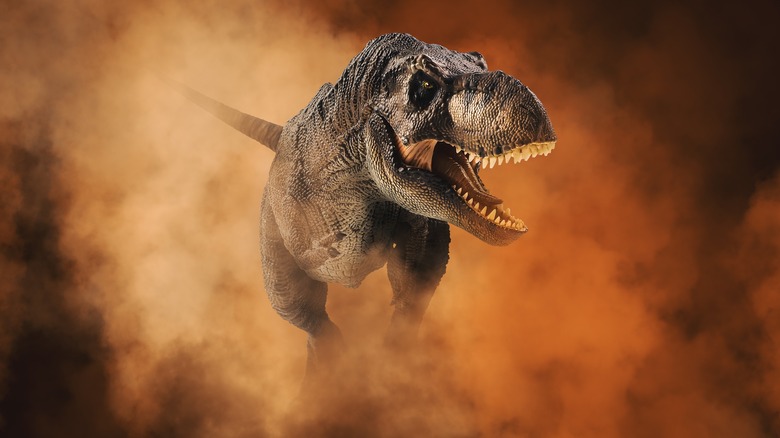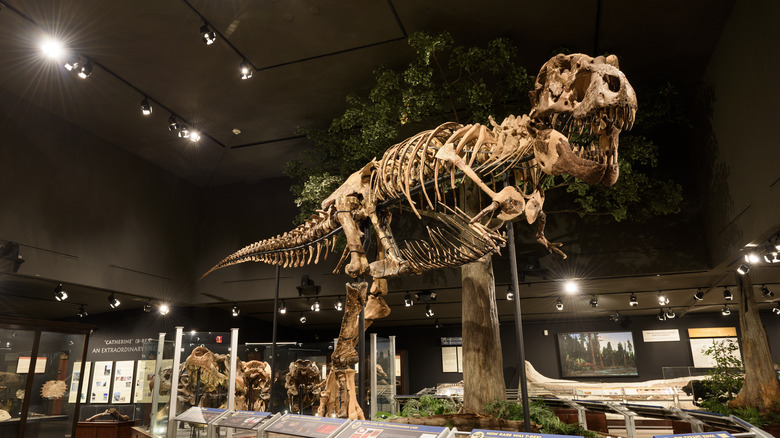Why Were T-Rex's Arms So Short? Researchers Have A New Idea
The Tyrannosaurus Rex may have been the fiercest predator that has ever roamed planet Earth. But for all its ferocity, there was something comically off with its forelimbs. Apart from being laughably short for an animal its size, most scientists thought these arms were practically useless, given that they could not come close together to picking anything up.
And even though previous studies have revealed that the T.rex could have bench pressed 400 pounds using these arms, they were still too short to be used as a weapon. For a long time, researchers did not have a clear answer to what had become a classic question among budding paleontologists.
Some of the earlier theories surrounding T.rex's arms ranged from it being pectoral claspers that helped male T.rex hold females in place during copulation — to a potential tool that was used for attracting mates. Most of these theories were eventually disproved by later studies.
And just when we thought researchers had hit a stone wall, noted paleontologist Kevin Padian, in his recent study, has floated a new hypothesis. According to him, the short length of the T.rex's arms was an evolutionary change to prevent accidental or intentional amputation during a feeding frenzy.
A defense mechanism?
In a recent paper that appeared in the journal Acta Palaeontologia Polonica, Kevin Padian, who serves as a Professor of Integrative Biology at the University of California, Berkeley, asks readers to turn around the age-old question of "Why were the T.rex's arms so short" and ask how the short length of its arms benefitted the giant predator.
The T.rex's short arms were a natural evolutionary process that helped prevent their accidental amputation, says Padian's theory, based his story on existing knowledge of T.rex's social structure. It is now widely accepted that the T.rex showed the behavior of a predator as well as a scavenger, with some studies also claiming that the species could have been pack hunters. There is also enough fossil evidence to show that the T.rex often ate in groups.
And given what we know of feeding behavior among modern-day reptiles like Crocodiles and Komodo Dragons, where accidental amputations are fairly common, professor Padian believes the T.rex's short arms made it less susceptible to such accidents. This, in turn, helped the animal escape grievous injuries which could have led to infection, hemorrhaging, shock, and eventual death.
We already know that the T.rex's predecessors possessed significantly longer arms that were a lot more functional and mobile. This also signified an evolutionary trend of it becoming shorter with each passing generation. What is even more interesting is the fact that this trend of shortened arms affected other Theropods as well — including the likes of the Carcharodontosaurus and the Carnotaurus.
Professor. Padian, however, admits that this latest hypothesis will be hard to substantiate given that it's been 66 million years since the last T. rex became extinct.

